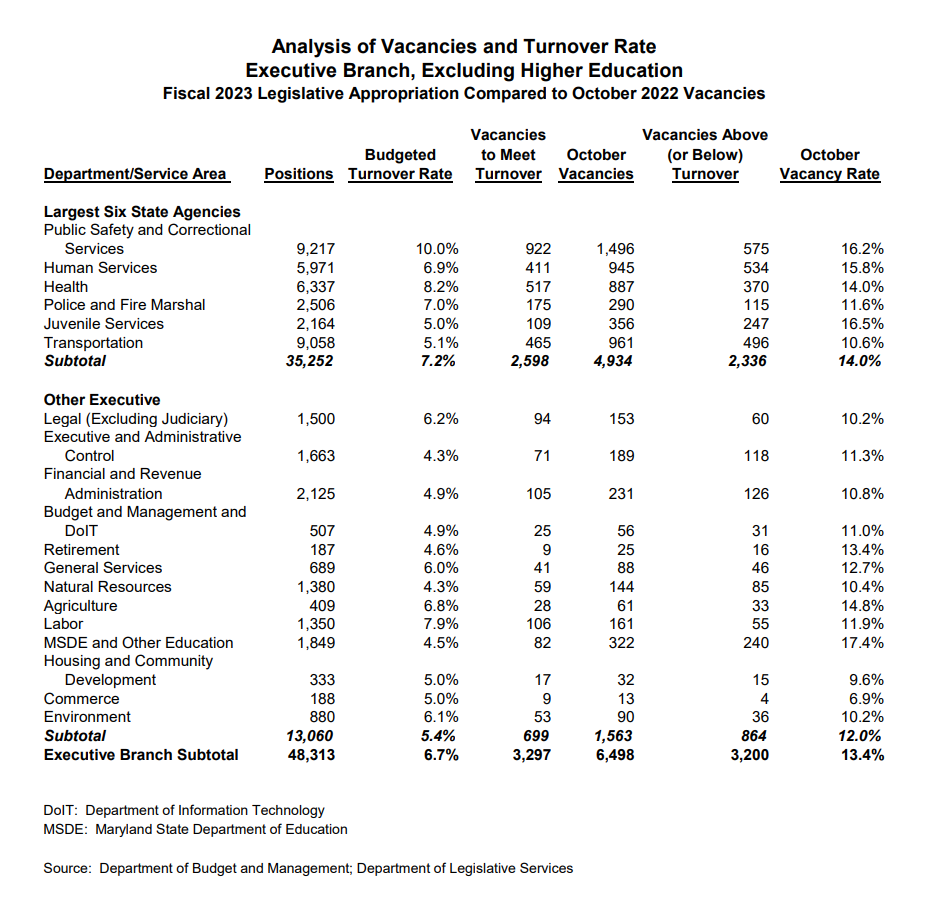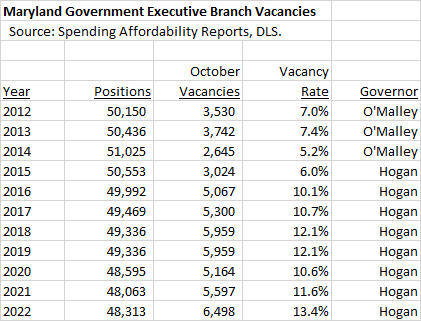By Adam Pagnucco.
Recently released data from the General Assembly’s Department of Legislative Services (DLS) shows that vacancies in state government have spiked over the last year, part of a longer term trend. In some departments, the vacancy rate approaches 15% and beyond.
Vacancy rates and turnover are two of the many issues that are examined in the General Assembly’s Spending Affordability Committee reports, which are prepared by DLS and released in the fall. The table below is an extract from this month’s report and applies to October 2022.

The state’s executive branch has 6,498 vacancies, or 13.4% of positions. At first glance, one wonders whether COVID burnout has had an impact on state government. Some of the highest vacancy rates are in education, public safety, corrections, human services and health, all areas in which COVID has seriously impacted the workforce.
But there is more going on than just COVID. I pulled vacancy data from past spending affordability reports dating back to 2012. The results appear below.

Vacancy rates under Governor Larry Hogan have been consistently higher than in the last three years of former Governor Martin O’Malley’s administration. Hogan’s workforce is also smaller than O’Malley’s. Until recently, the General Assembly had no power to add to operating appropriations in the governor’s budget (although voters approved a change in that authority which takes effect in FY24). Hogan is not responsible for COVID, but he owns the larger trend in increasing vacancies, which has been noted by Democratic leaders and state government unions.
I asked Delegate Marc Korman, who is on the House of Delegates’ appropriations and spending affordability committees, for a comment on this issue. (Korman’s tweet on the subject aroused my interest.) Korman responded:
The fix won’t happen overnight but we need to work collaboratively with our state workforce to ensure their pay, benefits, and working conditions are attractive and competitive. This is a challenge in our area with the federal government and many sizable local governments. Although Governor Hogan has taken some sensible steps, like opening up more jobs for high school graduates, he has too often awarded higher pay increases to his favored segments of the workforce and not treated all of our workers fairly. Treating all of our workers fairly will attract more to these positions. I think we will see a variety of bills—and potentially executive actions—to try and do that next session.
Add this to the stack of issues facing incoming Governor Wes Moore.
